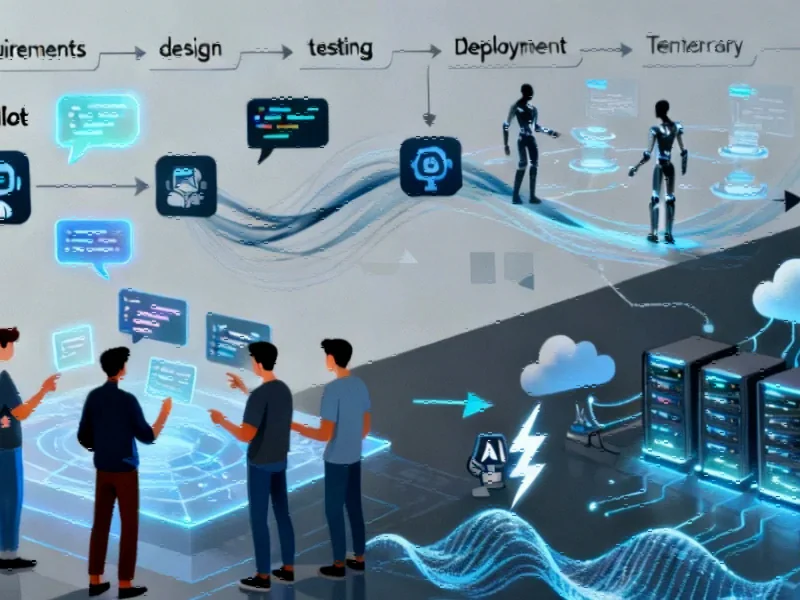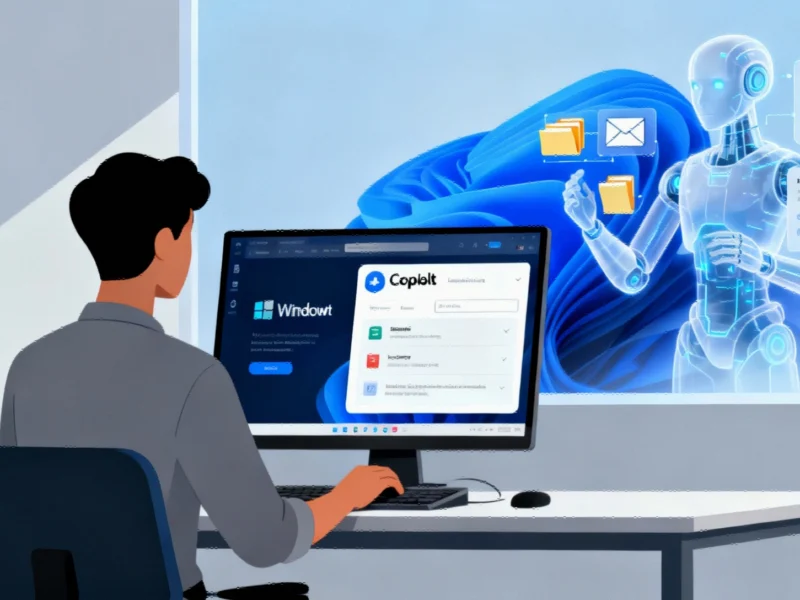The Vector Database Revolution in Industrial Computing
Vector databases have rapidly evolved from niche research tools to critical infrastructure powering industrial AI applications. Across manufacturing, logistics, and industrial automation, these specialized databases enable everything from predictive maintenance and quality control to supply chain optimization and robotic vision systems. The explosion of options—from PostgreSQL with pgvector and MySQL HeatWave to specialized solutions like Pinecone, Weaviate, and Milvus—presents both unprecedented opportunity and significant operational challenges for industrial enterprises.
The Hidden Cost of Vector Stack Volatility
While choice appears beneficial on the surface, industrial AI teams are discovering the dark side of this rapid innovation cycle. New vector databases emerge quarterly, each with distinct APIs, indexing methodologies, and performance characteristics. What seems like an ideal solution today may become obsolete or limiting within months, creating what industry experts are calling “vector stack instability.”
This volatility translates directly to business risk for industrial organizations. Most projects begin with lightweight engines like DuckDB or SQLite for prototyping, then migrate to Postgres, MySQL, or cloud-native services for production deployment. Each transition requires rewriting queries, reshaping data pipelines, and delaying time-to-value—undermining the very agility that industrial AI initiatives promise to deliver.
Why Portability Became Non-Negotiable
Industrial enterprises face a complex balancing act in their AI infrastructure strategy. They must experiment rapidly with minimal overhead to demonstrate early value, scale safely on production-quality infrastructure without extensive refactoring, and remain nimble enough to adopt superior backend technologies as they emerge. Without portability, organizations accumulate technical debt, become hesitant to adopt new technologies, and struggle to move prototypes to production efficiently.
The consequence is clear: the database becomes a bottleneck rather than an accelerator. This reality makes database abstraction emerges as critical strategy for industrial enterprises deploying AI at scale. Portability—the ability to change underlying infrastructure without re-engineering applications—has transitioned from technical preference to strategic requirement.
Abstraction as Industrial-Grade Infrastructure
The solution isn’t finding the “perfect” vector database—such a thing doesn’t exist in today’s rapidly evolving landscape. Instead, forward-thinking industrial enterprises are changing how they approach the problem entirely. The adapter pattern, a well-established software engineering principle, provides a stable interface while concealing underlying complexity.
History demonstrates how this approach has transformed entire industries. ODBC/JDBC standardized relational database access, reducing vendor lock-in risks. Apache Arrow created universal columnar data formats, while ONNX established vendor-agnostic standards for machine learning models. Kubernetes abstracted infrastructure details, enabling consistent workload deployment across cloud environments. Most recently, initiatives like any-LLM are creating unified APIs across large language model providers.
These abstractions succeeded by lowering switching costs and transforming fragmented ecosystems into reliable, enterprise-grade infrastructure. Vector databases have reached the same critical juncture, with related innovations in abstraction layers pointing toward a more stable future.
The Adapter Approach to Vector Operations
Instead of binding application code directly to specific vector backends, industrial organizations can develop against abstraction layers that normalize essential operations like inserts, queries, and filtering. This approach doesn’t eliminate the need to choose backends, but it makes those choices significantly less permanent.
Development teams can prototype using DuckDB or SQLite in laboratory environments, scale to Postgres or MySQL for production deployment, and eventually adopt specialized cloud vector databases—all without application re-architecture. Open-source efforts like Vectorwrap exemplify this approach, offering a unified Python API across Postgres, MySQL, DuckDB, and SQLite backends.
These early implementations demonstrate abstraction’s power to accelerate prototyping, reduce lock-in risk, and support hybrid architectures employing multiple backends simultaneously. The approach aligns with broader industry developments in digital infrastructure standardization.
Strategic Benefits for Industrial AI Leaders
For decision-makers overseeing industrial data infrastructure and AI initiatives, abstraction delivers three critical advantages:
- Accelerated Prototype-to-Production Cycles: Teams can develop in lightweight local environments and scale to production without expensive rewrites, dramatically shortening time-to-value for industrial AI applications.
- Mitigated Vendor Risk: Organizations can adopt emerging backend technologies as they prove valuable, avoiding lengthy migration projects by decoupling application code from specific database implementations.
- Architectural Flexibility: Companies can strategically combine transactional, analytical, and specialized vector databases within unified architectures, all accessible through aggregated interfaces.
The result is data layer agility—increasingly the differentiator between fast-moving and stagnant industrial enterprises. This approach supports the complex market trends toward flexible, adaptable industrial computing infrastructure.
The Broader Open Source Abstraction Movement
The vector database evolution represents one manifestation of a larger trend: open-source abstractions becoming critical infrastructure components. From Apache Arrow in data formats to ONNX in machine learning models, Kubernetes in orchestration, and any-LLM in AI APIs, these projects succeed by eliminating friction rather than adding capabilities.
They empower enterprises to move rapidly, hedge technology bets, and evolve alongside the ecosystem. Vector database adapters continue this legacy, transforming a high-velocity, fragmented domain into infrastructure that industrial enterprises can genuinely depend upon for mission-critical applications.
The Future of Vector Database Portability
The vector database landscape shows no signs of consolidation. Instead, options will continue multiplying as vendors optimize for specific use cases, scale requirements, latency thresholds, hybrid search capabilities, compliance needs, and cloud platform integrations.
In this environment, abstraction becomes strategic. Organizations embracing portable approaches will prototype more boldly, deploy more flexibly, and scale more rapidly to emerging technologies. While the industry may eventually develop a “JDBC for vectors”—a universal standard codifying queries and operations across backends—open-source abstractions are currently laying essential groundwork.
Conclusion: Abstraction as Competitive Advantage
Industrial enterprises cannot afford to let database lock-in impede their AI ambitions. As the vector ecosystem matures, the winners will be those treating abstraction as infrastructure—building against portable interfaces rather than binding themselves to any single backend. The decades-long lesson from software engineering remains relevant: standards and abstractions drive adoption. For vector databases in industrial computing, that transformation is already underway, promising more agile, resilient, and future-proof AI infrastructure.
This article aggregates information from publicly available sources. All trademarks and copyrights belong to their respective owners.
Note: Featured image is for illustrative purposes only and does not represent any specific product, service, or entity mentioned in this article.



